From November 5th, 2021 to April 26th, 2022, during the 38th Chinese Antarctic scientific exploration, relying on the all-round guarantee system of Chinese Antarctic scientific research, the recoverable subglacial lake thermal melting probe developed by the Institute of Polar Science and Engineering of Jilin University conducted an Antarctic field test on the Dalk Glacier near Zhongshan Station in Antarctica, China, with a cumulative drilling depth of over 500 m. Through the Antarctic drilling test, the developed equipment was fully tested, precious test data was obtained, and valuable Antarctic drilling experience was accumulated, which provided a strong technical guarantee for China to carry out the scientific drilling project of subglacial lake in Antarctica and realize the exploration of the subglacial environment in Antarctica, and made China’s subglacial lake exploration technology into the international first-class level.
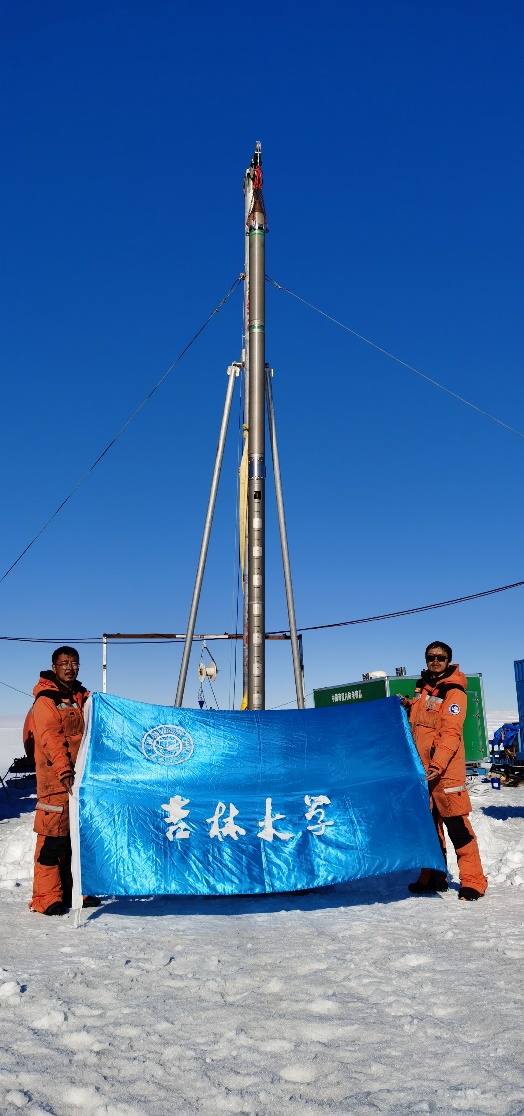
Antarctic subglacial lakes are covered by the ice cap for a long time and have unique high pressure, low temperature, low nutrient and dark environmental conditions that may provide unique information on biological evolution, Earth's climate change and the evolution of the Antarctic ice cap. The scientific drilling of Antarctic subglacial lakes is the only method to obtain physical samples of subglacial lakes, and the scientific samples obtained can be used to analyze the physicochemical parameters and water quality characteristics of subglacial lake systems under the special environmental conditions of the polar ice, and then reveal the formation mechanism of subglacial lakes, evolutionary laws and the mechanism of their influence on the material balance of the Antarctic ice cap. For this purpose, Prof. Sun Youhong, academician of Chinese Academy of Engineering, former Vice President of Jilin University and President of China University of Geosciences (Beijing), and Prof. Pavel Talalay, national high-level overseas appointed expert of Jilin University, led the polar research team to take the lead in the National Key Research and Development Program topic-“Antarctic subglacial lake pollution-free drilling sampling and observation system”. The team revolutionarily proposed to adopt the thermal thawing drilling method of hot thawing drilling with bottom drilling tool and frozen closure of top borehole for pollution-free exploration and sampling of subglacial lake. In response to the characteristics of large drilling depth, high pressure, low temperature and short operation time in the drilling process of Antarctic subglacial lake, the joint technical research has broken through the key technologies such as small-diameter high-strength high-voltage power supply flexible cable technology, large aspect ratio embedded winch and high-precision automatic drill feeding technology, ice thermal melting drilling gradient heating technology, high-voltage resistant solenoid valve technology, remote data transmission and control and uninterrupted automatic power supply, and successfully developed a recoverable subglacial lake thermal melting detector that can conduct pollution-free drilling sampling and observation of the Antarctic subglacial lake, solving the technical problems of pollution-free drilling sampling and observation of the Antarctic subglacial lake, and filling the gap in China's Antarctic subglacial lake detection technology and equipment.
Participating organizations include China Polar Research Center, Hangzhou University of Electronic Science and Technology, Nanjing Institute of Astronomy and Optical Technology of Chinese Academy of Sciences, Shanghai Institute of Aerospace Systems Engineering, and National Ocean Technology Center.

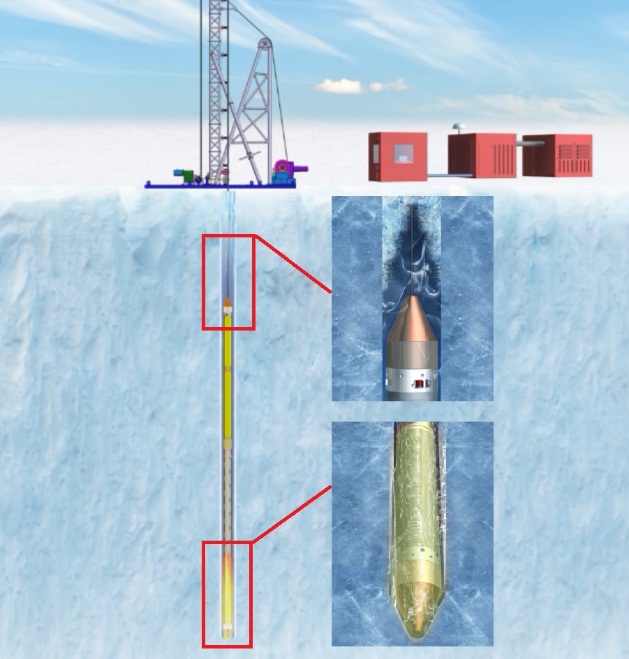
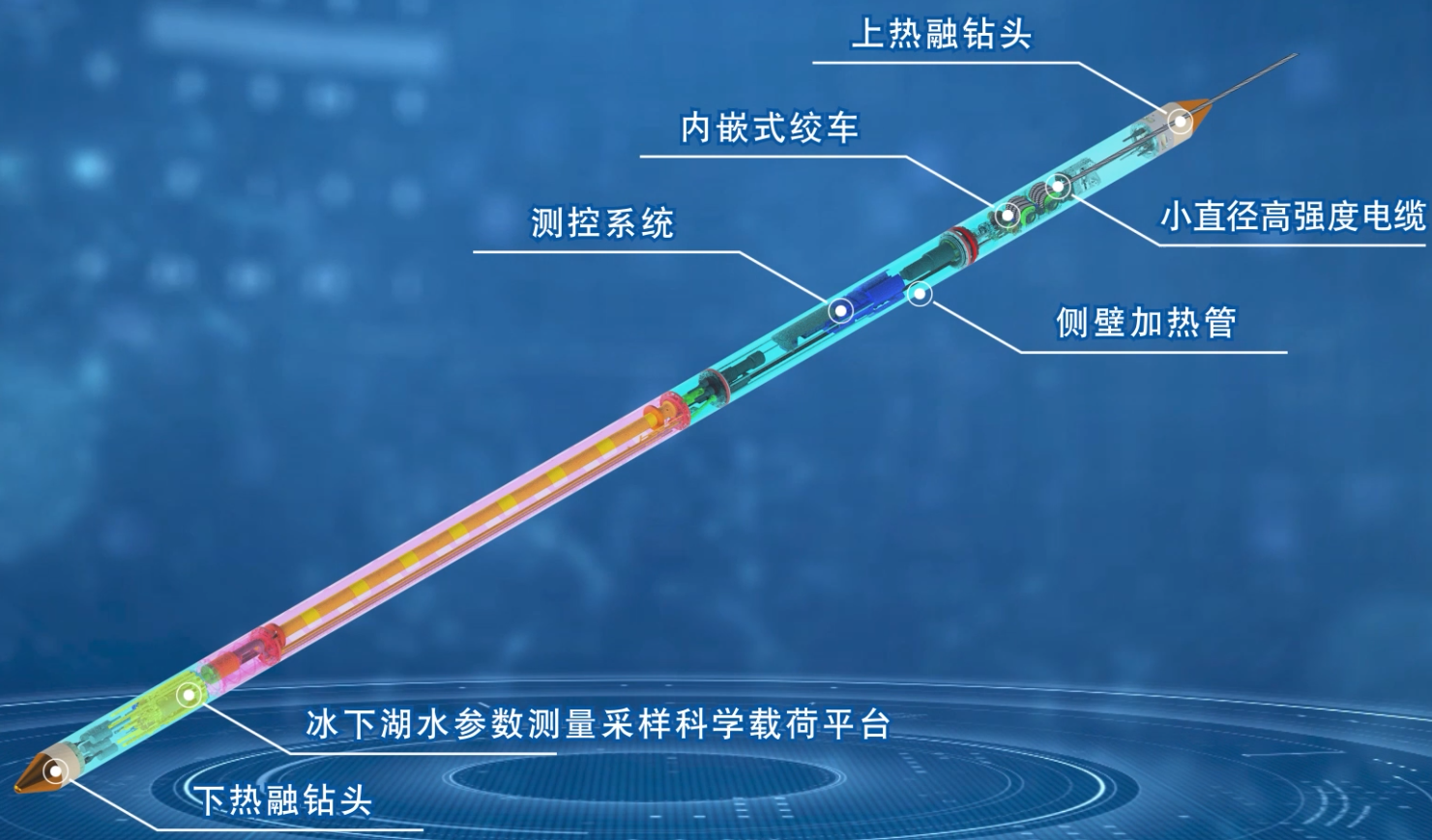
In addition, the Institute of Polar Science and Engineering has undertaken and participated in a number of national projects in the polar field, such as the National Natural Science Foundation of China’s major instrumentation project “Core drilling equipment for deep subglacial bedrock without drill pipes” and the National 863 Program “Key technology and system development of ice shelf hot water drilling rig”. It has successfully developed a number of sets of polar drilling equipment, which has strongly promoted the development of polar drilling technology in China.
In 2011, China’s first Antarctic deep ice core scientific drilling project under the responsibility of the China Polar Research Center was officially launched, and Jilin University, as the main technical support institution, participated in the drilling task at Kunlun Station in Antarctica for all six Antarctic summer working seasons, successfully carried out core drilling of granular snow layer, ice layer and brittle ice layer, with the drilling depth exceeding 803.54m and obtained continuous ice core samples.
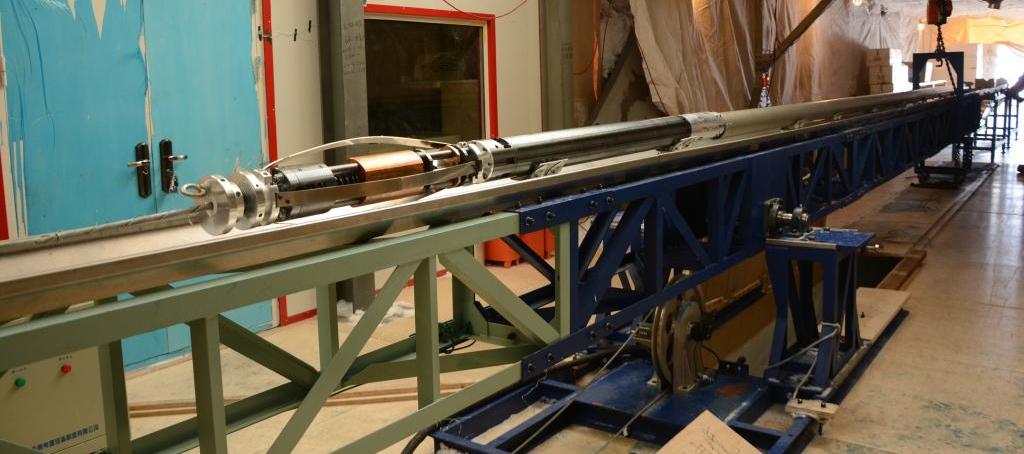
In 2018-2019, the polar deep subglacial bedrock core drilling equipment without drill pipes was applied in the field at the Dalk Glacier in Antarctica, obtaining 198m continuous permeable bottom ice cores and 6cm subglacial bedrock cores, making China the third country in the world to drill subglacial bedrock samples in the Antarctic ice cap. The breakthrough was reported in the famous international academic journal Nature.
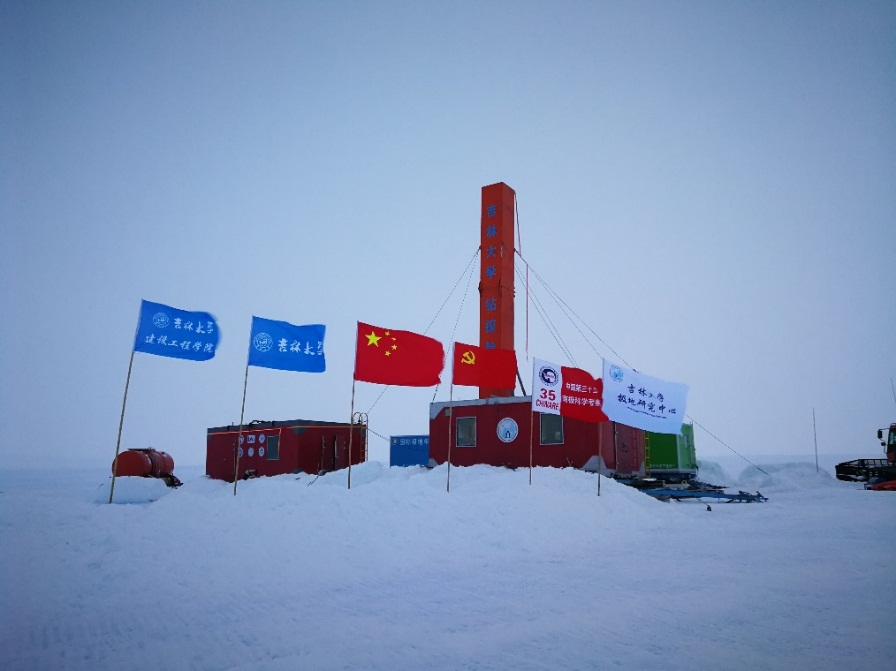

From 2017 to 2020, our faculty and students were invited by Alfred Wegener Institute in Germany and Victoria University of Wellington in New Zealand to participate in the German Antarctic Scientific Expedition and New Zealand Antarctic Scientific Expedition with the self-developed subglacial sediment vibration sampler for three times, and carried out the subglacial marine sediment sampling work in Ekstrom Ice Shelf and Ross Ice Shelf in Antarctica respectively. The sampler is expected to break through the world-wide problem of sampling hard sediments from the seafloor and has gained wide attention from international colleagues.

In 2018-2019, our university sent 3 participants to the fieldwork of the Arctic East Greenland Deep Ice Core Program Project (EGRIP) organized by the Center for Ice and Climate Research, Niels Bohr Institute, University of Copenhagen, Denmark.

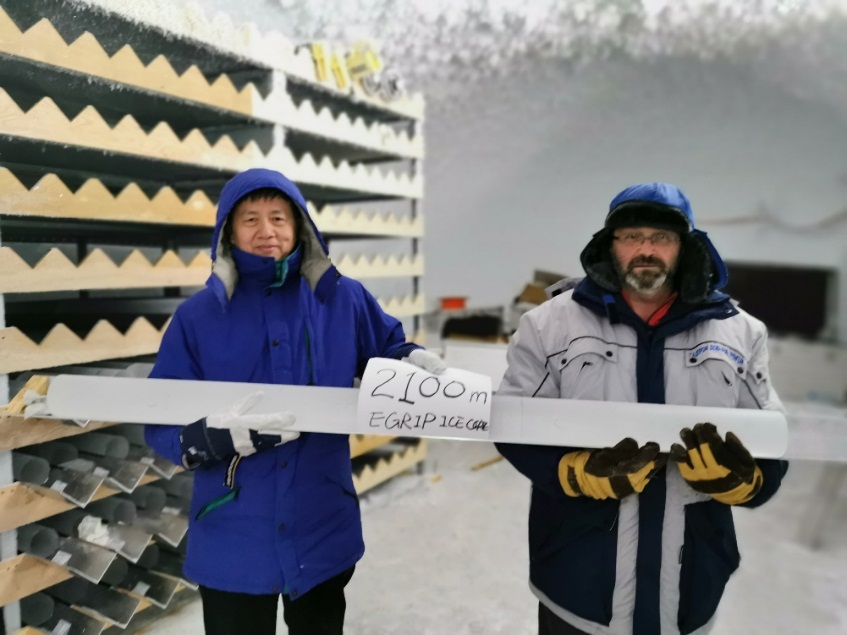
In 2015-2016, PhD student Jialin Hong visited the British Antarctic Survey for exchange and participated in the British Antarctic Science Expedition during this period, and tested the Rapid Access Isotope Drill (RAID) with Dr. R. Mulvaney, the academic leader of the British Antarctic Survey, at Sky Blu Station, Antarctica.
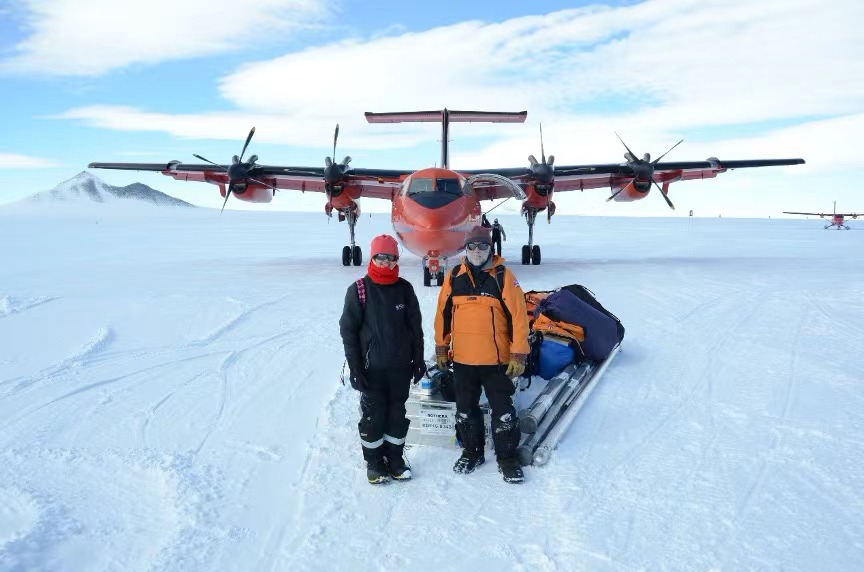
In October 2019, three students and faculty members from the Polar Center went on a field trip to the Urumqi Heyuan 1 Glacier in Xinjiang Uygur Autonomous Region and successfully completed field testing of the hand-crank/gasoline engine shallow auger tool to verify the reliability and alpine suitability of the tool, and collected about 12.4 m of ice cores for research on ice core conductivity, ice core creep characteristics, and microbiology.
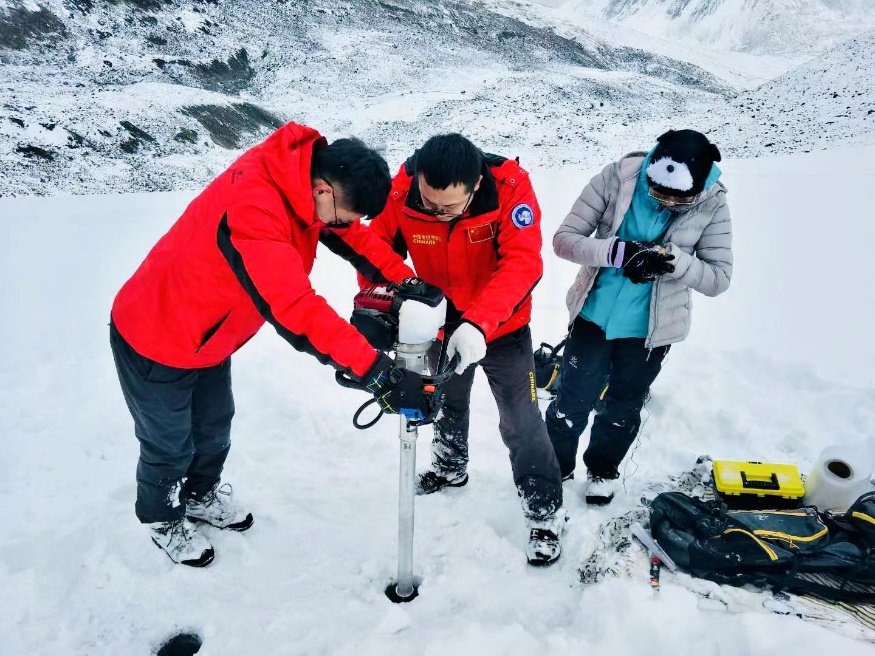
The Institute of Polar Science and Engineering has been committed to research on polar drilling technology and equipment for a long time, and has been expanding its research direction, and is gradually carrying out scientific research on ice cores, taking a scientific research development path of combining technology and science. Since its establishment, the Institute of Polar Science and Engineering has obtained more than 20 scientific research projects with a total funding of more than 50 million, published more than 100 scientific papers, including more than 60 SCI papers, granted more than 100 patents, and published 3 monographs. At present, we have built a number of polar drilling technology and science laboratories, such as ice drilling laboratory, cryogenic drilling fluid laboratory, cryogenic testing technology laboratory, and polar ice core cryogenic science laboratory, etc. We have sent 38 people to participate in the Chinese Antarctic Scientific Expedition, German Antarctic Scientific Expedition, New Zealand Antarctic Scientific Expedition and Danish Arctic Scientific Expedition, and won the title of “Advanced Group of Chinese Polar Expedition”. At the same time, the university has had extensive exchanges and cooperation with scientists and research institutes in the polar regions of Russia, the United States, Japan, Denmark, Germany and New Zealand, and has trained a large number of talents in polar drilling technology, which has strongly supported the development of polar science disciplines in the university and contributed to the realization of China’s polar strengthening strategy.
